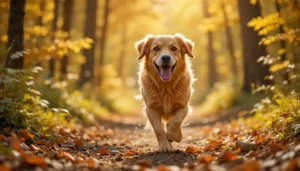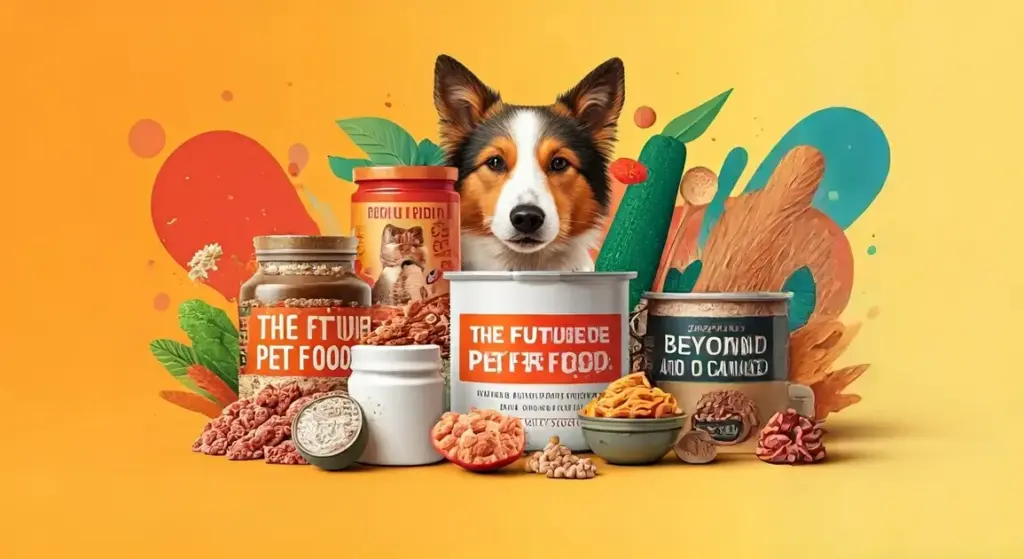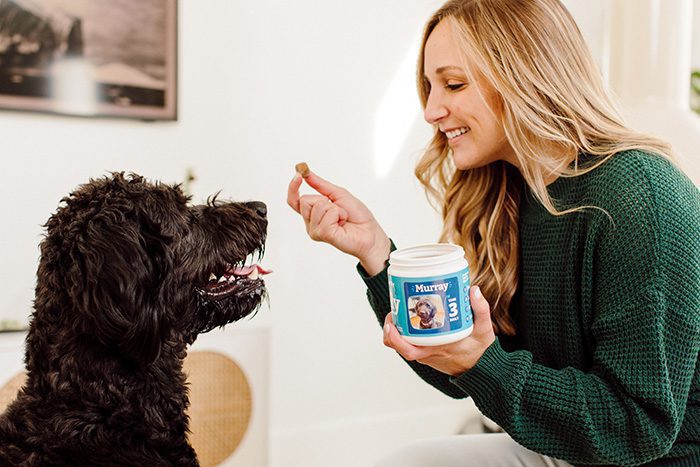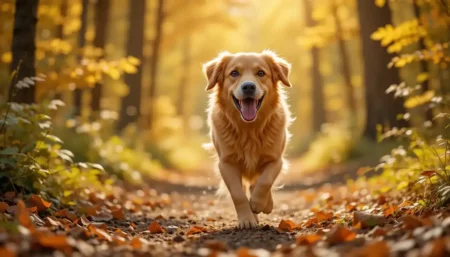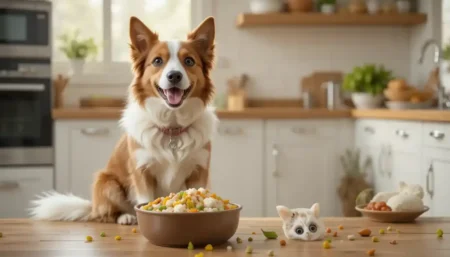The future of pet food is shifting from basic kibble and canned options to personalized, sustainable, and tech-driven meals that prioritize health and the planet. This evolution reflects pet owners’ growing demand for transparency, nutrition, and eco-friendly choices.
As pets become family members, their diets are adapting with innovations like insect proteins, DNA-customized recipes, and smart feeders.
Gone are the days of one-size-fits-all pet meals. Today, the pet food industry is booming with fresh ideas that mirror human wellness trends.
In this article, we’ll explore why traditional options are fading, the rise of new ingredients and technologies, and how you can embrace these changes for your furry friends.
Get ready to discover a world where feeding your pet feels like crafting a gourmet experience.
The Shift in Pet Food Trends
The future of pet food is all about moving beyond convenience to focus on what truly benefits pets and the environment. Pet owners are now questioning ingredients and origins, much like they do with their food. This change is driven by a desire for better health outcomes and sustainable practices.
For decades, kibble and canned food ruled due to their ease and low cost. But quality concerns have sparked a revolution. Pet parents want meals that support long-term wellness, not just fill bowls.
- Humanization of Pets: More than ever, pets are treated like kids. A 2023 survey showed 62% of millennials would skip their meal before giving their dog subpar food. This mindset leads to diets with superfoods like blueberries and probiotics.
- Sustainability Push: Traditional pet food contributes to global emissions through livestock farming. Now, brands use “ugly” vegetables to cut waste by up to 40%, making meals greener without skimping on nutrition.
- Customization Boom: Technology allows tailored feeding. From app-controlled portions to DNA-based recipes, pets get meals suited to their breed and lifestyle.
This shift isn’t just trendy—it’s reshaping how we view pet care. As options grow, choosing the right food becomes an informed decision, not a quick grab.
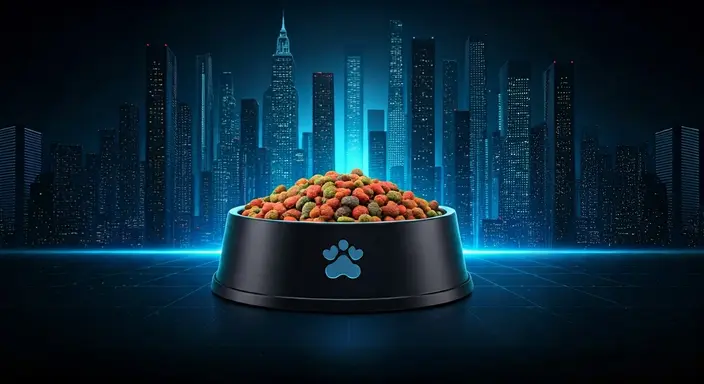
Why Traditional Kibble and Canned Are Losing Ground
In the future of pet food, traditional options like kibble are being challenged by healthier, more transparent alternatives. Owners are linking processed diets to issues like obesity and allergies, leading to a demand for change.
Kibble’s reign came from its shelf life and affordability, but trust has eroded. High-profile recalls have made pet parents wary.
For instance, contaminants like melamine in 2007 and pentobarbital in 2018 highlighted risks in mass-produced food.
The Impact of Recalls and Label Scrutiny
Recalls have shaken confidence in big brands. Owners now read labels closely, avoiding vague terms like “meat meal” that might include low-quality byproducts.
This “ingredient literacy” has surged, with 58% of dog owners shunning artificial preservatives in 2023—a 22% rise from five years earlier.
The Emotional Bond Driving Change
With 73% of millennials calling themselves “pet parents,” feeding feels personal. This bond pushes for meals with wholesome ingredients like chia seeds and turmeric. It’s no longer about convenience; it’s about showing love through nutrition.
Health Concerns Tied to Processed Diets
Processed foods often lead to problems. Obesity affects many pets, and allergies are on the rise. By switching to fresher options, owners see improvements, like reduced vet visits and better energy levels.
As these issues mount, the industry responds with innovative solutions. The result? A market where quality trumps quantity, setting the stage for exciting new players.
Emerging Power Players in Pet Nutrition
The future of pet food features bold innovators redefining what’s in your pet’s bowl. From human-grade meals to alternative proteins, these changes address health, ethics, and the planet. Let’s explore the key players making waves.
Brands are blurring the lines between pet and human food. Companies like The Farmer’s Dog use USDA-certified ingredients in fresh recipes. These preserve nutrients lost in kibble’s high-heat processing.
Human-Grade Meals Take Center Stage
Human-grade food means ingredients fit for people. Delivered fresh, these meals use real beef or salmon, crafted by vets. They offer better digestion and shine in coats, appealing to owners who want the best.
Alternative Proteins Revolutionize Diets
Traditional meats are out; novel sources are in. Crickets pack more iron than spinach and use far less water. Algae provides omega-3s, while lab-grown meat from brands like Bond Pet Foods cuts emissions by 87%.
- Crickets: High in protein (65% vs. chicken’s 23%), they’re eco-friendly and tasty for pets.
- Algae: Baked into treats, it supports joint health without harming oceans.
- Lab-Grown Options: Fermented proteins mimic meat without farms, ideal for sustainability.
Upcycling Waste for Premium Nutrition
Waste reduction is key. Brands like Jiminy’s turn surplus crops and brewery grains into kibble. One partners with sushi spots to make chews from salmon skins, diverting 12 tons of waste yearly.
These innovations aren’t cheap—freeze-dried options cost more—but they deliver value. As the market grows to $278 billion, they’re proving that pet food can be ethical and effective.
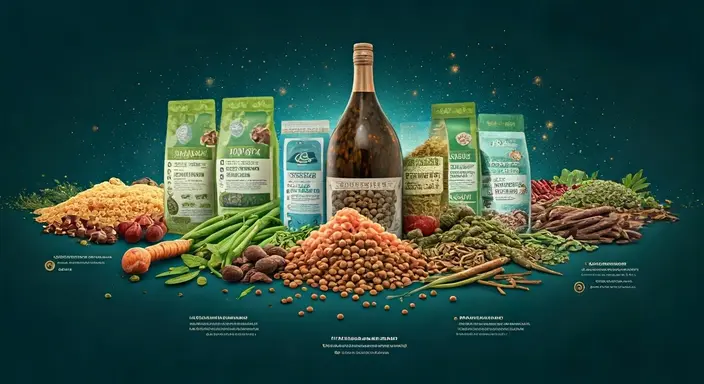
Precision Nutrition: Science Tailoring Diets to Individual Pets
The future of pet food embraces science for diets as unique as your pet’s personality. Using DNA, microbiomes, and AI, meals now target specific needs. This personalized approach solves issues like allergies and boosts overall health.
Stories like Luna the Border Collie show the power: her itch vanished with a gut-focused diet. Precision nutrition moves past generic food, using data for real results.
Unlocking Secrets with DNA Testing
DNA kits from companies like Embark reveal more than breed. They spot metabolic quirks, like Beagles’ obesity risk on carbs. For cats, they flag poultry allergies in 1 in 5.
- Obesity Prevention: Gene insights lead to low-carb plans.
- Allergy Detection: Avoid triggers early for happier pets.
- Aging Support: Antioxidants delay issues in breeds like Golden Retrievers.
In practice, a diabetic cat’s insulin needs dropped 60% with genetically guided food.
The Microbiome’s Role in Health
Your pet’s gut hosts trillions of microbes. Startups like AnimalBiome analyze stool for custom probiotics. This balances digestion, reducing problems like diarrhea.
AI and Tech for Smart Feeding
Devices like PetPlate’s SmartFeeder adjust meals based on activity or weather. They sync with trackers for precise portions, preventing overeating.
- Activity Adjustments: Less food on lazy days.
- Health Monitoring: Alerts for uneaten meals signal issues.
- Vet Integration: Shares data for early disease detection.
Costs range from $200 for DNA tests, but the $12.3 billion market by 2027 shows it’s worth it. Challenges like data privacy exist, but benefits outweigh them for many.
Making Pet Food Sustainable: Green Innovations Leading the Way
Sustainability is central to the future of pet food, turning meals into eco-heroes. With pets’ diets impacting the planet, brands are innovating to reduce waste and emissions.
Conventional chow has a big footprint: a dog’s diet rivals an SUV’s emissions. But new approaches like bug proteins and upcycling are changing that.
Insect-Based Foods: A Low-Impact Protein Source
Brands like Yora use black soldier fly larvae, needing minimal water. Dogs prefer them in trials, and they pack a protein punch.
- Water Savings: 1 gallon vs. 2,500 for cattle.
- Nutrition Boost: 65% protein supports muscle health.
- Acceptance: 83% of dogs choose insects over beef.
Upcycling Food Waste into Treats
Purina and Chippin turn leftovers like grape pomace or watermelon rinds into food. This prevents CO2 from landfills—4.5 tons per ton of pet food.
Algae as a Superfood Alternative
Algalife grows spirulina for omega-3s, easing arthritis by 40% in trials. It replaces fish oil, protecting oceans.
Lab-Grown Meat for Ethical Eating
Because Animals culture meat without farms, using 99% less land. It’s species-appropriate for cats, though costs are high at $18 per tin.
Eco-Friendly Packaging Solutions
Compostable bags from Earth Animal break down quickly. Blockchain from Open Farm tracks sustainability.
To go green, audit proteins and use apps like Pawprint. Only 14% of big brands commit to net-zero, so choose certified options.
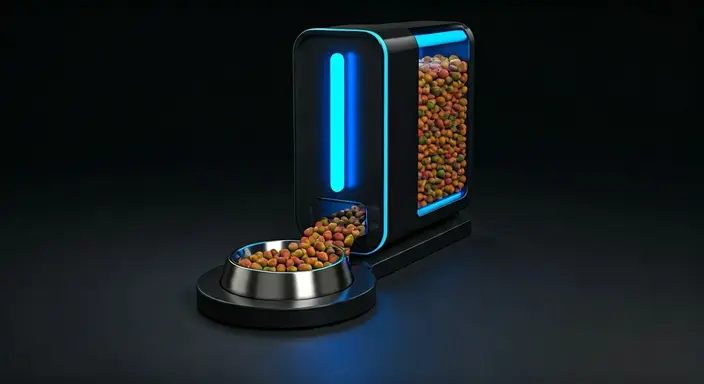
Technological Advancements Transforming Pet Food
Technology is revolutionizing the future of pet food, from 3D printing to biotech. These tools create custom, healing meals. Explore how gadgets and science are making feeding smarter and more effective.
Baxter the Dachshund ate again thanks to 3D-printed soft kibble. Tech solves real problems, like dental issues or allergies.
3D Printing for Custom Textures and Meds
Printers layer ingredients into shapes that clean teeth or hide meds. A UC Davis study showed 89% of kidney-diseased cats ate more willingly.
- Dental Benefits: Crunchy designs reduce plaque.
- Allergy Solutions: Isolated ingredients in fun forms.
- Med Delivery: Disguised as treats for easy dosing.
Smart Feeders as Nutrition Coaches
Petlibro devices adjust portions via apps, cutting obesity by 34% in studies.
- Sync with Trackers: Match food to exercise.
- Alerts: Notify for health checks.
- Cost Savings: Fewer vet trips justify $300 price.
Biotech Reengineering Ingredients
Precision fermentation creates meat-like proteins from yeast. CRISPR boosts algae nutrients, reducing fish oil needs.
Ethical debates persist—47% support it, 33% worry—but audits build trust.
Future tech includes edible sensors for gut monitoring and mood-boosting probiotics.
Market Growth and Economic Impact of the Future Pet Food Industry
The future of pet food isn’t just about innovation—it’s a booming market with economic ripple effects. Projected to reach $278 billion globally, this sector creates jobs and drives sustainability investments. Adding this perspective shows how pet food trends influence broader economies.
Rapid growth stems from demand for premium products. The personalized segment alone jumps from $3.8 billion in 2022 to $12.3 billion by 2027. This surge supports startups and reduces waste through upcycling.
Job Creation and Industry Shifts
New brands hire vets, scientists, and farmers. Insect farming, for example, opens eco-jobs in rural areas.
Economic Benefits of Sustainability
Green practices cut costs long-term. Upcycling saves on raw materials, while lab-grown meat lowers emission taxes.
Challenges and Opportunities
High prices limit access, but subsidies from NGOs help. Overall, this industry prototypes food solutions, benefiting human markets too.
| Aspect | Traditional Pet Food | Future Pet Food |
|---|---|---|
| Market Size | Stable but limited | $278B by 2030 |
| Job Impact | Manufacturing-focused | Diverse: tech, bio, farming |
| Economic Savings | Low innovation costs | Waste reduction saves billions |
| Growth Rate | 2-3% annually | 8-10% with personalization |
This economic lens highlights pet food’s role in global progress.
FAQs
What does the future of pet food look like?
The future of pet food focuses on personalized, sustainable options beyond kibble. Think DNA-tailored meals and insect proteins that cut emissions. It’s all about health and eco-friendliness for happier pets.
Are insect-based proteins safe and nutritious for my pet?
Yes, insects like crickets are safe and packed with protein, iron, and omega-3s. They’re vetted by vets and often preferred by pets in taste tests. Start small to ensure your pet adjusts well.
How can I make my pet’s diet more sustainable at home?
Swap beef for insect or algae alternatives once a week, and choose upcycled brands. Use apps like Pawprint to track your pet’s carbon footprint. Look for certifications to avoid greenwashing.
What role does technology play in the future of pet food?
Tech like AI feeders and 3D printers customizes meals for health needs. It adjusts portions based on activity and even hides meds. This makes feeding precise and preventive.
Is personalized pet food worth the extra cost?
For pets with issues like allergies, yes—it can reduce vet bills long-term. DNA tests cost $200-500 but offer tailored nutrition. For healthy pets, start with the basics before going full custom.
Conclusion
The future of pet food blends science, sustainability, and tech for meals that nourish pets and the planet. From personalized DNA diets to green innovations like lab-grown meat, these trends address health and ethics. Embrace them by trying one sustainable swap today—your pet and the world will thank you.

